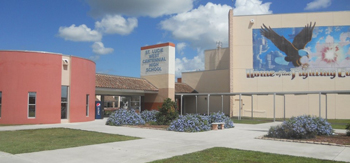 FORT PIECE, Fla. — Districts often weigh the costs of going green: ‘Is it really worth the upfront money? What if the return is less than expected?’ Well, if you use St. Lucie County School District in Fort Pierce, Fla. as an example, then worry no more.
FORT PIECE, Fla. — Districts often weigh the costs of going green: ‘Is it really worth the upfront money? What if the return is less than expected?’ Well, if you use St. Lucie County School District in Fort Pierce, Fla. as an example, then worry no more.
The district has just recently lowered its electric bill by $2.4 million, thanks to energy-efficient installations and strategies throughout the district.
A major factor into the savings was the district’s decision to switch to thermal energy storage systems at five of its schools. The savings aren’t just a one-time thing either, as district officials have said they believe the electrical savings will continue as more schools become equipped with energy storage systems.
“Four to five years ago we started an aggressive campaign on energy management,” said Marty Sanders, the district’s executive director of growth management, land acquisition and intergovernmental relations in a statement made during the district’s board meeting. “Our actual dollars spent on electric power went from about $10.6 million to about $8.1 million, about a $2.4 million reduction or 23 percent reduction.”
To answer the question on whether it is worth it go green, Florida Power & Light Co. (FPL) believe it is worth at least $1 million. The company gave the district more than $1 million in incentive rebates for making the switch to a more energy-efficient storage system.
The district is saving money with the new thermal energy system by having the facility use the most energy at night, when demands and costs are lower. Water is frozen at night and stored in large tanks to be used throughout the day when the building is occupied and frequent cooling is needed.
St. Lucie West Centennial High School was the first school in the district to use the thermal energy and saw the savings really add up. The school was the first school in the district to receive an energy rebate check for more than $500,000.
Other energy-efficient installations include high-efficiency light bulbs and motion sensors that automatically turn off lights if no one is in the room, according to Sanders.
The district’s commitments to the environment also extend beyond the classroom walls. During the 2008-2009 school year, the district saved nearly $3 million by consolidating bus routes and changing school bell times.
By implementing these changes, the district was able to eliminate 40 buses off the road, and they earned an Energy Star award in 2010 from the United States Green Building Council’s South Florida Chapter.

